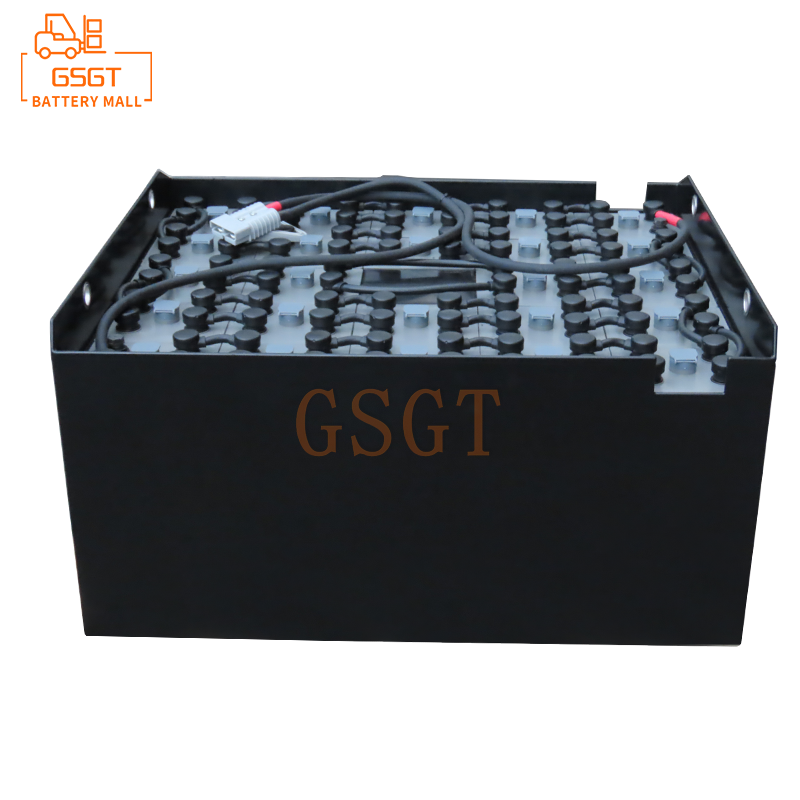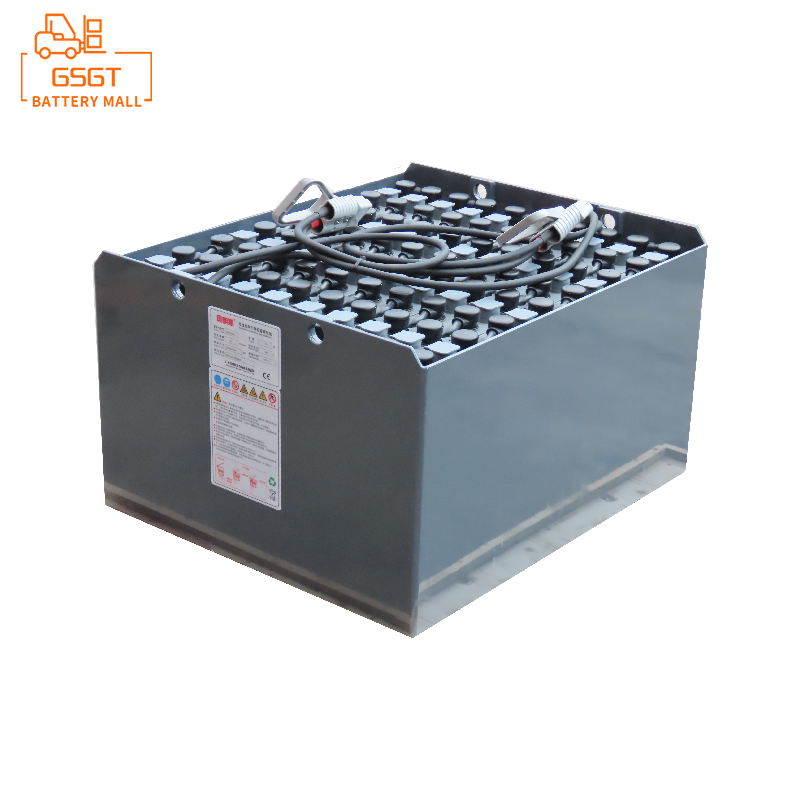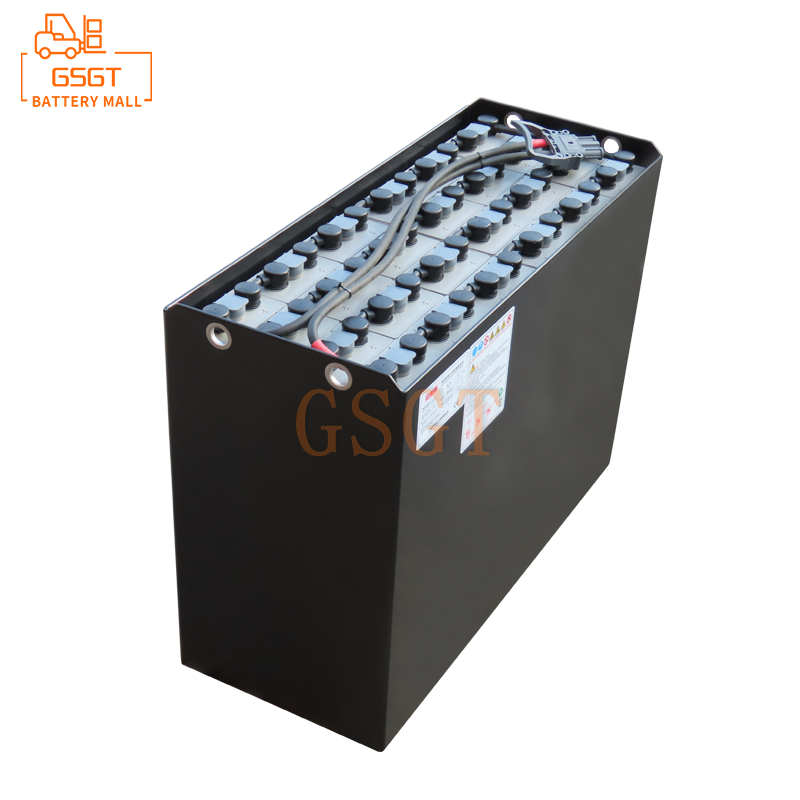Time:2025-07-11 11:12:57
Browse:630
In the daily operation of forklifts, lead-acid batteries serve as the core power source, and their performance directly affects the operational efficiency and service life of forklifts. However, as the usage time increases, the battery is bound to encounter problems such as reduced capacity and weakened charging and discharging performance. At this point, scientific repair of the battery can not only reduce the cost of equipment replacement but also extend its service life. The following will provide a detailed introduction to the repair techniques for lead-acid batteries in forklifts.
Detection and evaluation before repair
Before carrying out the restoration work, comprehensive inspection and assessment are the key links to ensure the restoration effect. This process requires the use of professional tools to precisely measure various performance indicators of the battery.
First, use a multimeter to measure the terminal voltage of the battery. Under normal circumstances, the terminal voltage of a fully charged lead-acid battery should be around 12V (2V for a single cell). If the voltage is significantly lower than the standard value, there may be problems such as sulfation of the plates and shedding of active materials. Secondly, the density of the electrolyte is measured by a hydrometer. The standard value is usually 1.28g/cm³. Abnormal density may indicate an imbalance in the electrolyte concentration or the presence of an internal short-circuit fault.
In addition, the appearance of the battery also needs to be inspected. Carefully observe whether the battery casing is bulging or leaking, and whether the terminals are corroded. If these problems exist, they need to be dealt with first before evaluating whether they are worth repairing. For batteries with cracked shells and severe leakage, since the sealing and safety after repair cannot be guaranteed, it is not recommended to carry out repair. Instead, they should be replaced directly.
Core repair technology
Plate vulcanization repair technology
Plate sulfation is one of the common faults of forklift lead-acid batteries. It is mainly due to the battery being in a state of undercharging for a long time, and the lead sulfate crystals in the electrolyte deposit on the surface of the plates to form a hard sulfation layer, which hinders the chemical reactions during the charging and discharging process.
When repairing, first completely discharge the battery, pour out the original electrolyte, and rinse the plates with distilled water 2 to 3 times until there are no obvious impurities in the rinsing liquid. Subsequently, prepare a low-concentration sulfuric acid solution and inject it into the battery. Let it stand for 2 to 3 hours to allow the electrolyte to fully penetrate the plates. Next, charge with a small current (usually 1/10 of the rated charging current). When the battery voltage rises to 2.4V per cell, stop charging and let it stand for 1 hour. Repeat this process 3 to 4 times, which can effectively dissolve the sulfation layer on the surface of the plates.
Active substance shedding repair technology
The shedding of active substances mostly occurs when the battery is charged and discharged at a high current for a long time or overcharged, manifested as turbidity of the electrolyte and the appearance of sediment at the bottom. If the detachment is relatively mild, the following repair methods can be adopted.
First, discharge the battery to the terminal voltage, pour out the electrolyte and collect the sediment at the bottom (to avoid direct discharge causing pollution). Clean the interior of the battery with distilled water to remove any remaining sediment, and then refill it with new electrolyte. Charge the battery using the conventional charging method. During the charging process, closely monitor the battery temperature. If the temperature exceeds 45℃, stop charging and wait for it to cool down before continuing to prevent further damage to the plates due to high temperature.
Performance test after repair
After the repair work is completed, performance tests on the battery need to be conducted to verify the repair effect. First, conduct a capacity test. After fully charging the battery, discharge it at the rated current, record the discharge time, and calculate the actual capacity. If the actual capacity reaches more than 80% of the rated capacity, it indicates that the repair effect is good. If the standard is lower than this, the repair process needs to be rechecked or battery replacement should be considered.
Secondly, conduct charge and discharge cycle tests. After 3 to 5 charge and discharge cycles, if the capacity and voltage of the battery remain stable and there is no abnormal heating or leakage during the charge and discharge process, it indicates that the repaired battery can be put into normal use.
Frequently Asked Questions
Question: How long can the service life of a repaired battery last?
Answer: The service life of a repaired battery is affected by multiple factors, including the degree of battery wear and tear before repair and the maintenance and care conditions during daily use. Generally speaking, if the repair method is appropriate and the later maintenance is good, the service life can reach 80% of that of a new battery. Regular supplementary charging of the battery, avoiding overdischarge and long-term idleness can effectively extend its service life.
Question: Can a battery be repaired after it bulges?
Answer: Battery swelling is usually caused by excessive internal pressure leading to deformation of the casing. It is often caused by overcharging, drying up of the electrolyte or short circuit of the plates. Slightly bulging batteries can be attempted to restore some of their performance through repair techniques, but the safety and stability after repair will drop significantly, posing certain safety risks. Therefore, for severely swollen batteries, to ensure operational safety, it is not recommended to repair them. Instead, they should be replaced in a timely manner.
Through the application of the above repair techniques and standardized operation, the performance of forklift lead-acid batteries can be effectively restored, saving equipment costs for enterprises. However, it should be noted that the repair technology is not applicable to all faulty batteries. In actual operation, the specific conditions of the battery should be reasonably selected, and at the same time, daily maintenance and care should be strengthened to reduce the occurrence of battery faults from the source.

$5880

$7660

$8340

$2610

MESSAGE
Professional And Efficient
Security
Affordable Price
Professional Services